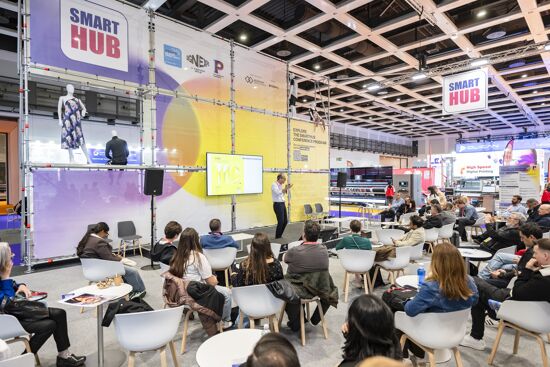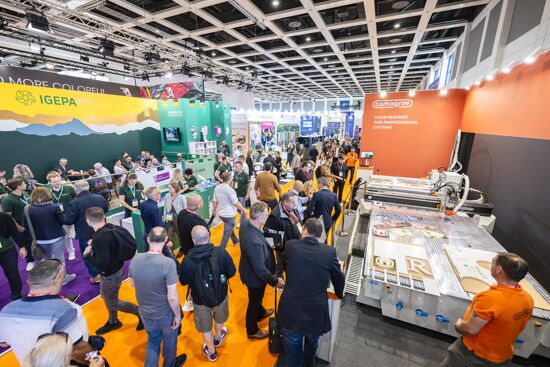Toppan Forms pushing the boundaries

Toppan is pushing the boundaries of what’s possible with digital print, and improving resource management within Kodak’s sustainability framework.
We all know the advantages of going direct to press for the environment. Direct digital printing requires no intermediate steps to create a printing forme. The print can be produced on demand and benefits from data driven production so variable data is possible and colour quality can be assured. On demand print also means reduced inventories, say five instead of five thousand, and can be produced close to its point of use. All this adds up to reduced emissions associated with consumables, processes, storage and transport.
The most common charge conventional press makers levy against digital printing, is that it isn’t fast or robust enough for industrial applications such as transactional work. Ricoh put paid to that with its VC6000 introduced in 2014 and more recently Kodak has recognised one of its inkjet customers for achieving a record with inkjet production.
Toppan Forms in Japan uses Kodak Prosper presses to deliver transactional print, such as invoices, credit card statements, colour direct mail and educational materials. But Toppan is one of a growing group of printing companies focused not only on printing skills. Toppan is all about data management and delivery and describes itself as a digital hybrid. Japan’s Ministry of Economy, Trade and Industry recognised Toppan in February for its its policies supporting employees’ health as well as its management philosophy and transparency. This recognises good management, but it doesn’t reflect what this means in day to day practise.
Toppan recently returned a jetting module from their Prosper to Kodak for refurbishment, under Kodak’s recycling and reuse programme. No big deal, except that this particular module had been in production for over 34,000 hours. Since the Prosper press had been installed in 2014, this head had potentially been printing for nearly five years nonstop. According to Kodak the head had printed enough A4 pages to get to the moon three times.
This is a story of operational excellence and technological robustness, but it’s also a story of saved resources and environmental impact. The efficiencies digital printing affords means the volumes of waste associated with conventional print have not been generated, and prepress consumables and chemicals have not been used. This is all a sustainability plus. And there’s more. Prosper is unusual in that it uses continuous flow inkjet technology, rather than the more common drop on demand option. With continuous flow inkjet, only the drops needed to print a dot reach the substrate and ink droplets that are not required are recirculated. This optimises printing speeds. Water based inks are cheaper too and generally have a wider colour gamut than drop on demand inks.
Toppan is pushing the boundaries of what’s possible with digital print, and improving resource management within Kodak’s sustainability framework.
This article was produced by the Verdigris Project, an industry initiative intended to raise awareness of print’s positive environmental impact. This weekly commentary helps printing companies keep up to date with environmental standards, and how environmentally friendly business management can help improve their bottom lines. Verdigris is supported by the following companies: AgfaGraphics, EFI, Fespa, Fujifilm, HP, Kodak, Ricoh, Spindrift, Splash PR, Unity Publishing and Xeikon.
Topics
Interested in joining our community?
Enquire today about joining your local FESPA Association or FESPA Direct
Recent news

Industry Experts Explore the Evolution of Smart Manufacturing in the Textile Industry
A FESPA SmartHUB roundtable at Personalisation Experience 2025 discussed smart manufacturing's transformative impact on the textile industry. Experts highlighted the shift to on-demand customisation, driven by digital printing, data analytics, and automation. Key takeaways included enhanced machine control, significant waste reduction through intelligent software and colour management, and improved sustainability via energy efficiency and near-shoring, ensuring agility and environmental responsibility in textile production.

FESPA 2025 gathers leading visionaries from across the speciality print industry in Berlin
FESPA Global Print Expo 2025, European Sign Expo and Personalisation Experience (6 – 9 May 2025, Messe Berlin, Germany) welcomed Visionaries from across the speciality print industry to shape the future of print, develop forward-thinking business strategies, and explore innovative ways to translate emerging industry trends into tangible growth opportunities.

Exploring Cutting-Edge Textile Printing Innovation with Adobe Print Engine 7
Adobe PDF Print Engine 7, launched at FESPA Global Print 2025, significantly advances textile printing. Debbie McKeegan shares how it automates non-white substrate management and RGB colour handling, expands colour gamuts with in-RIP multicolour transparency blending, and streamlines workflows for efficiency and sustainability. This update boosts customisation, reduces waste, and positions businesses at the forefront of digital print innovation.

FESPA Global Print Expo 2025 - Overall Highlights
FESPA Global Print Expo, Europe's leading print and signage exhibition returned to Messe Berlin from 6 - 9 May 2025.